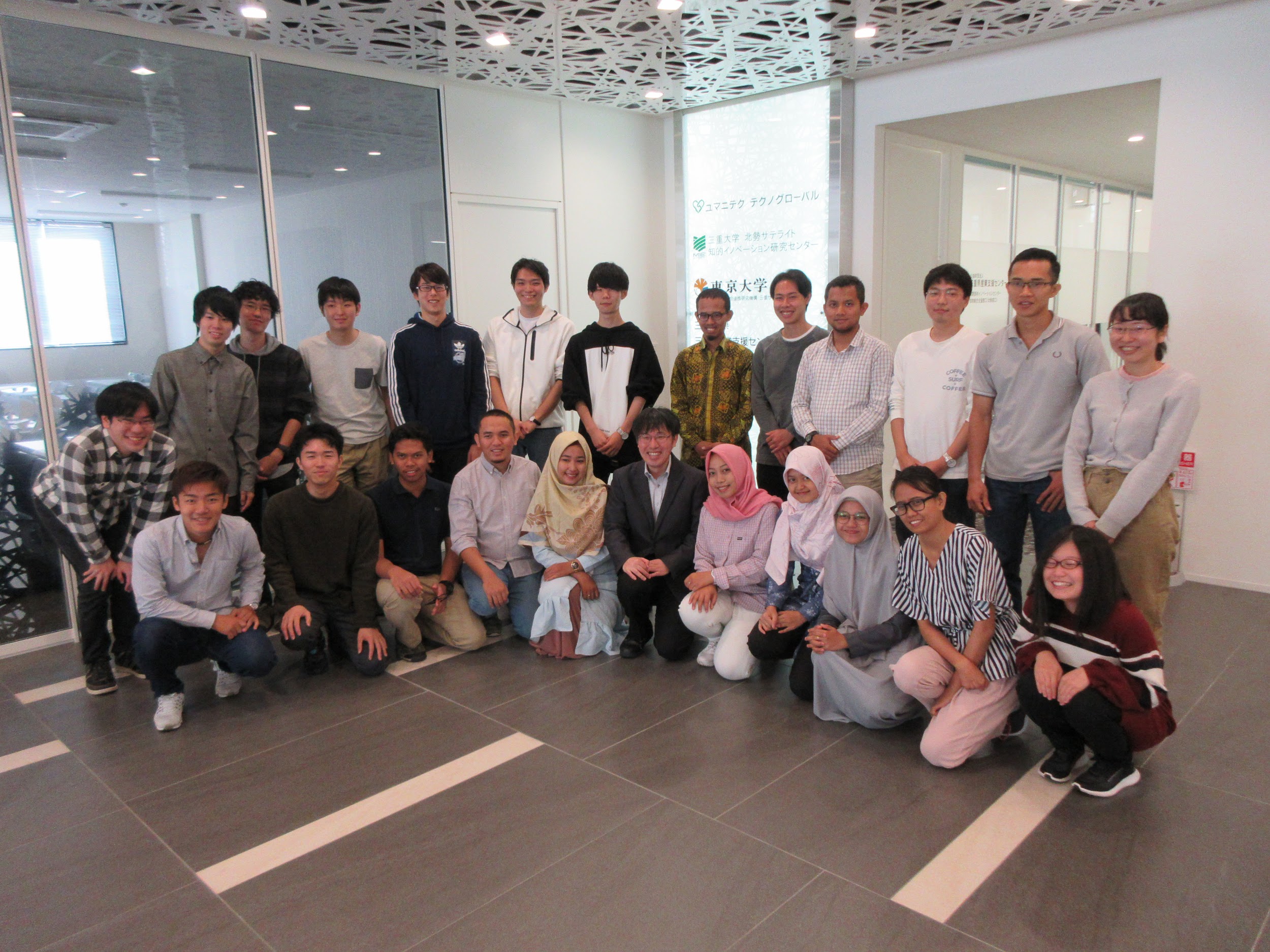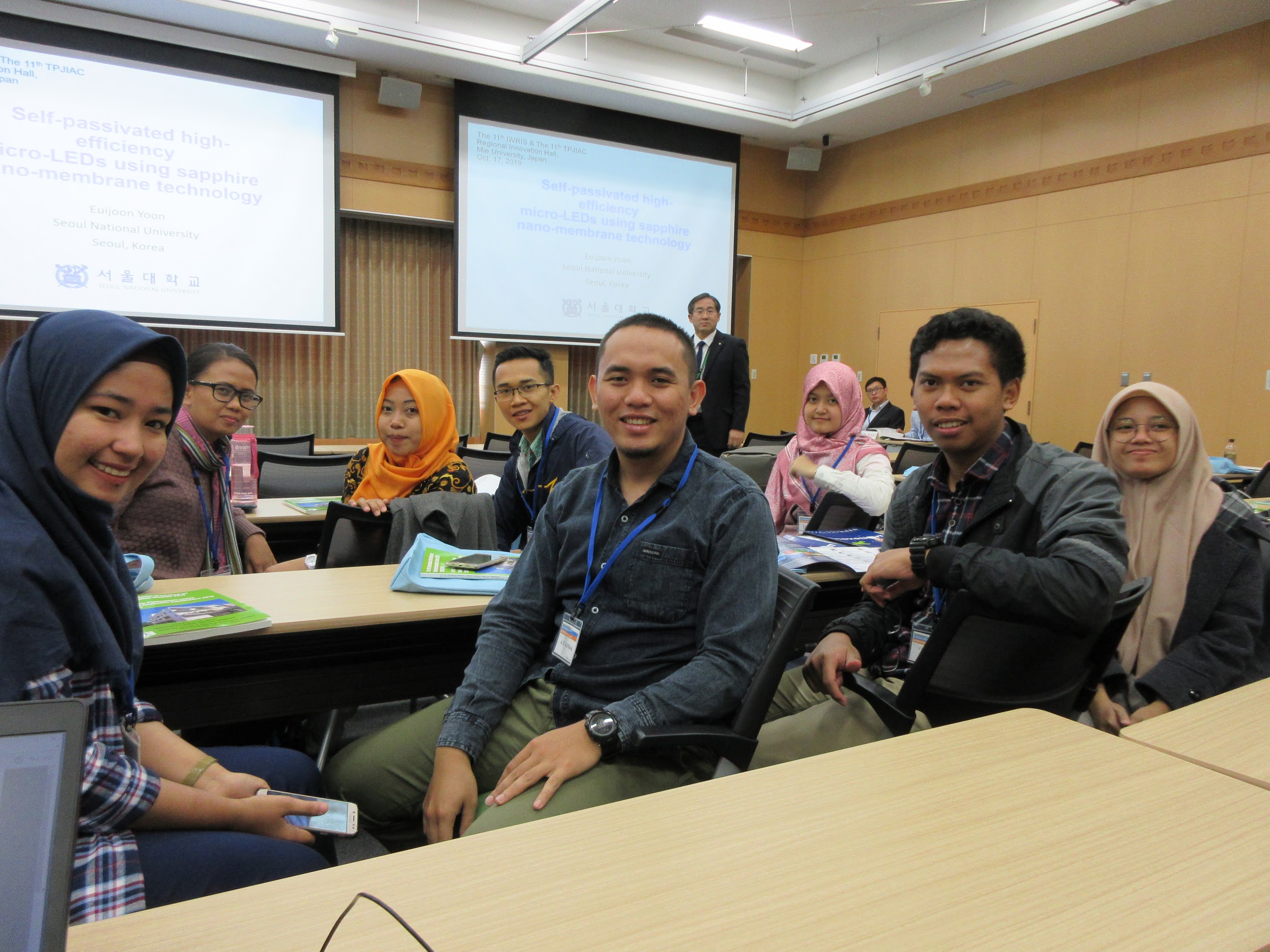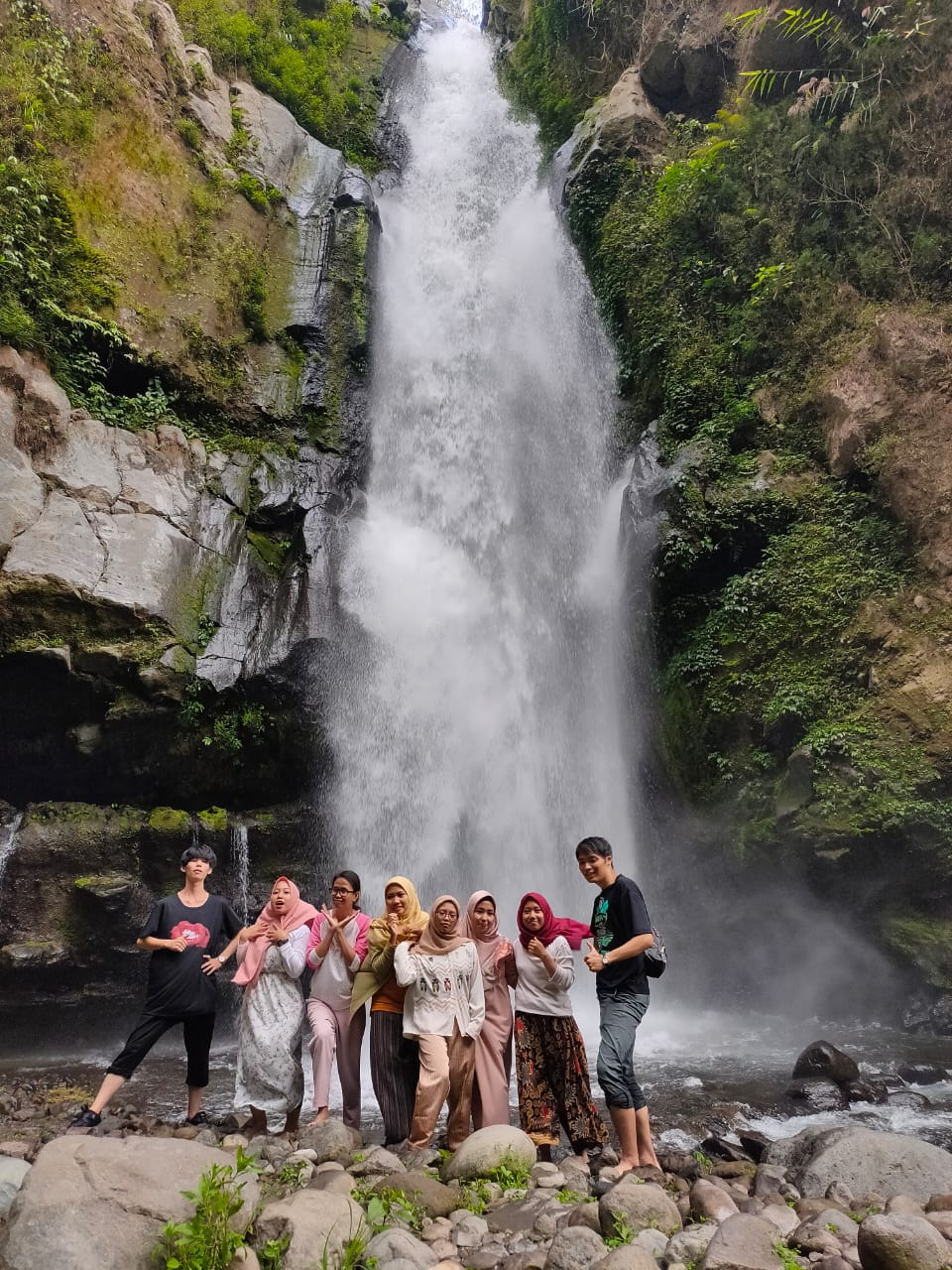
It was our first time stepping feet in Japan. The temperature at the time was cooler than in Indonesia but not too cold for us. Our first impression of Japan was clean and organized. Japaneses manage trash seriously. There could be more than five types of trash bin in one spot. No wonder if we rarely saw trash lying around public areas. People seem to follow the norm religiously.
On the first evening, we went to the nearest supermarket with Mr. Muiz, a postdoc at Mie University. We were so excited, even though we were already tired after a long flight. After walking 1 km, we could finally see Donki, the supermarket we wanted to go in to, across the road. The road at the time was very quiet. But instead of crossing the road, Mr. Muiz pointed that the zebra cross is 500 meters away. We’re glad that we learned that early. That was so much different than what we used to in Indonesia: follow the fastest route.
On the second day, we began our introductory course on computational material at Mie University. For some of us, that was our first hands-on training on the topic. For others, we found that the workflow of doing density functional theory (DFT) calculations using the program developed by Nakamura sensei was similar to using other DFT programs we had tried. The class that day was taught by Mr. Muiz. He began by introducing the basic theory of DFT and some common UNIX commands. At the end we tried to calculate the band structure and density of states (DOS) of Fe.
On the third day, we went to Intellectual Innovation Research Center. We were welcomed by dozens of arm robots displayed in the front office. Nakamura sensei gave us an introductory lecture on material science and material design. And then continued with collaborative research with Mr. Muiz, Mr. Arifin, and undergraduate and magister students. In the afternoon Mr. Edi Suharyadi visited Mie University and gave a short lecture on the state of research on magnetic materials.
On the fourth day, we tried to calculate the band structure and DOS of Ge and compared the result with Si from the previous calculation we did the day before. In the afternoon we attended the International Workshop on Regional Innovation Studies. Miss Iba, one of Nakamura sensei’s students, also presented her research in the workshop. And then we continued with lab tour at Research Institutes for Excellence “Materials Science and Advanced Electronics Created by Singularity.” In the evening we joined the banquet with workshop participants.
We started the fifth day by calculating the band structure and DOS of slab MgO. And then we had a lab tour to the Electrochemical Energy laboratory. We were very fortunate to have a chance to see how a battery is made from the start to the final product. In the evening we joined the student exchange party which was attended by all exchange students from other countries such as China, Vietnam, Kampuchea, Taiwan, and South Korea. Each representative had a chance to introduce their university and their culture. We were not only giving an oral presentation but also a dancing performance (Sekar jagad, Mapadendeng, and Jakarta dance). It was a fun party but also sad because it was our last time coming to Mie University.
On the sixth day, we went to Ise Grand Shrine with Mr. Muiz. On the way to the shrine, we passed farms, villages, and forests. The atmosphere was fresh and quiet. We then continued to Toba which is not far from the shrine. The timing was perfect that we were able to watch traditional Japanese women diving and collecting pearls. At night we departed to Kyoto.
On the last day in Japan, we went to Fushimi Inari Shrine and explored the tourist area around the shrine.
We enjoyed our visit to Japan. Seven days were very short to us. We could only do so many things and had to tighten our schedule to be able to do more activities. We enjoyed every moment of it, thus we often forget that it was time for the next schedule. The most important lesson for us was to be wiser with time, and we still struggled to adjust to how Japaneses manage their time.
That was our story in Japan. Two weeks later, Nagato, one of Mie University students, also had a chance to visit our university for almost a month. It was our turn to be the host.
Besides all the activities in the laboratory, we took him around Yogyakarta and introduced a variety of local foods and the local culture. On November 20th, Miyamae, who is also a Sakura Exchange student from Mie University, joined us to go to Borobudur, Ketep, and Kedung Kayang waterfall. We hope that we could share the same experience as we were in Japan.









